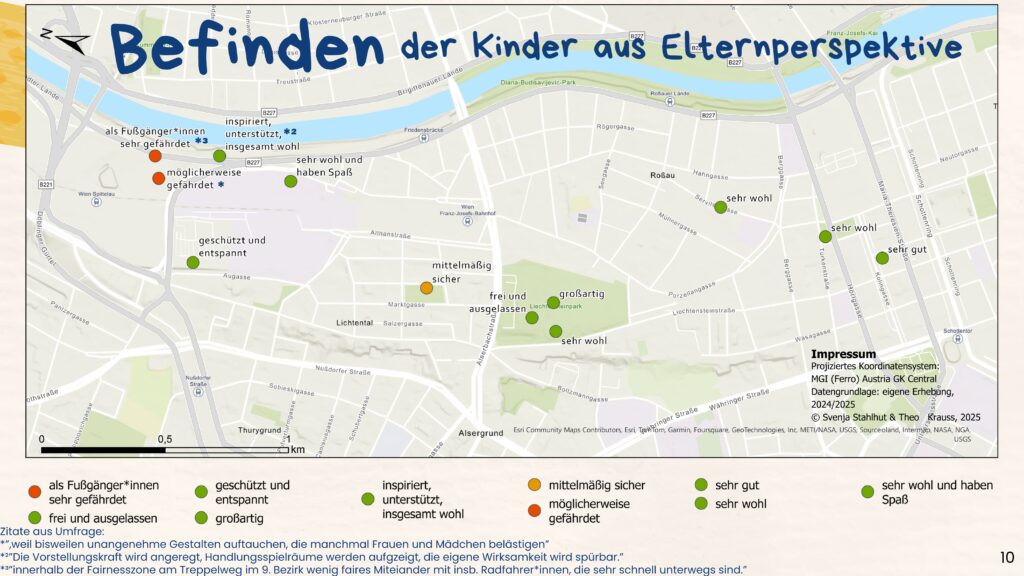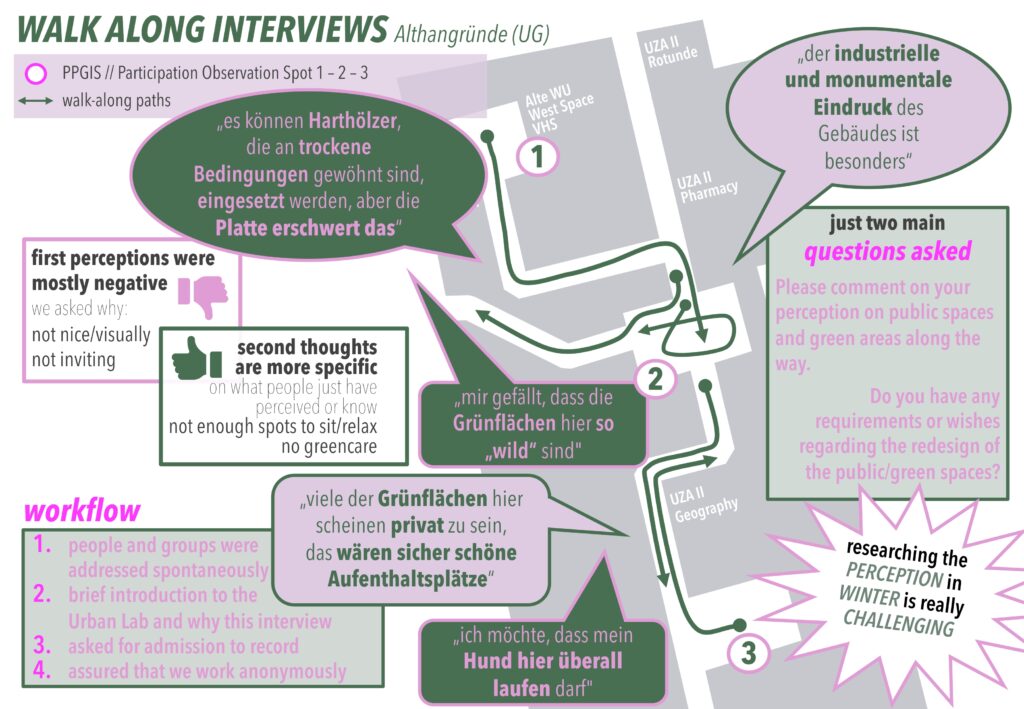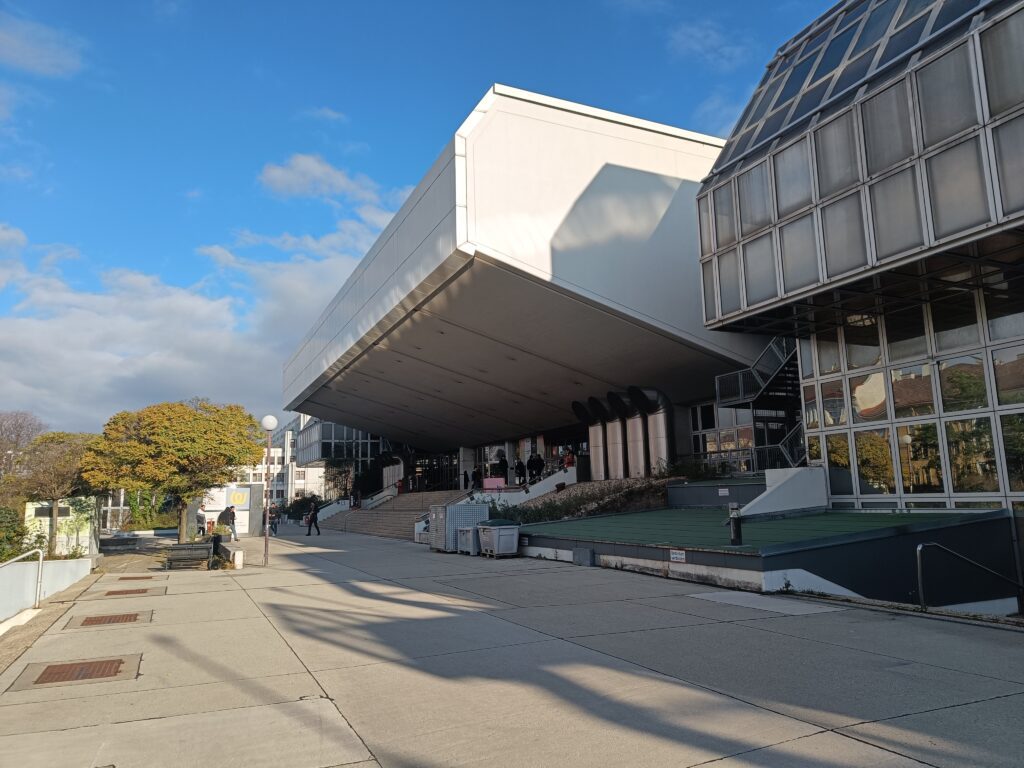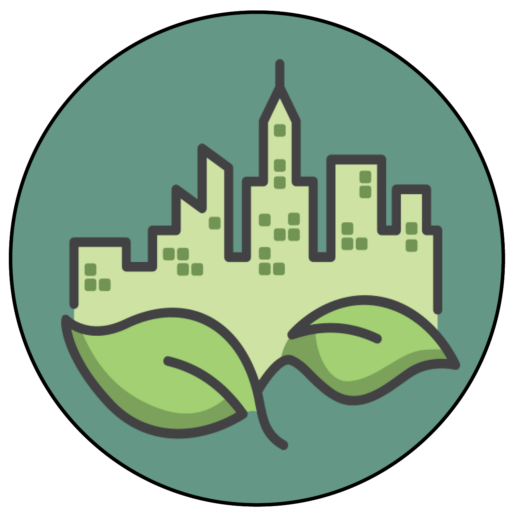Althangrund educational campus - students develop urban lab approaches
Old WU (University of Economics)? UZA? Althangrund West? At the Spittelau? What will the site of the future Campus Althangrund even be called? A fundamental question that the students of the course “Urban Labs: Approaches, Methods, Skills” came across in numerous discussions with local stakeholders.
As part of the course, students of the Master’s degree programs in Spatial Research and Planning as well as Geography: Global Change and Sustainability researched various practices at the planned Campus Althangrund and in its vicinity during the winter semester 24/25 while carrying out surveys using interviews, inspections and surveys.
On the one hand, the aim was to document the various current usages and to evaluate existing data and research. On the other hand, this research process was to be used to enter into discussions with various stakeholders (local residents, associations, initiatives, etc.) and learn more about their opinions and perceptions of the current situation. Questions were formulated that could be relevant for future participation processes as part of the planning of the Campus Althangrund.
The research was conducted in three subject areas/groups:

Children and young people
Open and green spaces
Solidarity and sharing
A location-based mixed-methods approach enabled the students to get to know and apply new research methods and thus bring together diverse perspectives, data and observations. This enabled interesting results to be achieved within a short period of time.
In order to find out whether and how the perspectives of children and young people have been included in the planning process for the Campus Althangrund and what their needs are, an interview was conducted with the head of the district and with a school representative in the 9th district. The group also used PPGIS (Public Participation Geographic Information System) to collect location-based data on the use and individual well-being of children and young people at selected locations in the district. Non-participant observation provided further information on the use of various locations.
Core results:
Young people place great value on non-commercial, sheltered spaces that offer them freedom for personal development. There is particularly high demand for spaces that are self-managed or at least easily accessible. These places provide protection from bad weather and allow young people to move around independently and without commercial pressure. Additionally, they wish for more transparency regarding the locations and usage options of sports facilities. They expressed interest in being involved in planning processes. A closer dialogue in the planning of public spaces and recreational offerings could help ensure that the interests and needs of young people are better taken into account.

The open and green spaces group dealt with the perception and functions of public spaces on the site of the planned Campus Althangrund. It was also possible to show which changes to the site are important for potential users in the future. The group used methods such as walk-along interviews, PPGIS and non-participatory observations.
Core results:
The group found that there is a particular need for accessible green spaces and non-consumption seating options. There is also a desire for more greenery to provide cooling and shade. Furthermore, this group pointed out that the existing green and open spaces are not only used by students and university staff, but also by local residents.

The Solidarity and Sharing group dealt with sharing practices on the planned campus and its surroundings, which are particularly promoted in the current use of the Alte Mensa. They focused on the practices of sharing and political action in the context of the Soli-Kitchen. This group also used PPGIS, participant observation and timeline interviews.
Core results:
The group developed the desired integration of temporary cultural projects into the long-term planning of the Campus Althangrund as a central point. It also became clear that collaborative sharing practices not only promote the sharing of resources with the neighborhood but also the exchange of knowledge. The need to make sharing spaces more inclusive and low-threshold was also recognized. Finally, the spatial dimension – the activities in the 4lthangrund cultural center and food distribution in Josefstädterstraße – was identified as a decisive factor for the organizational structure and social dynamics of the collective.

The students’ results offer a valuable starting point for continuing the dialog with local stakeholders. The insights gained from the various subject areas can be used to derive information for the further planning processes of the Campus Althangrund (even if the samples obtained are not representative). The needs of young people, the design of open and green spaces and collaborative sharing structures are essential aspects that should be incorporated into future planning. Continuous exchange and close cooperation with the stakeholders involved are crucial to ensure that the Campus Althangrund is designed in a sustainable and needs-based way. This makes planning processes not only transparent, but also participatory and sustainable.

What the site of the planned Campus Althangrund will ultimately be called remains to be seen – perhaps a name will be found over time that reflects the diversity of ideas and perspectives, or it will remain a lively discussion that will continue to accompany the campus.
Text: Svenja Stahlhut, 2025

